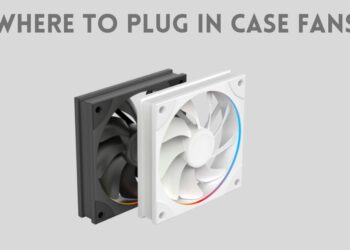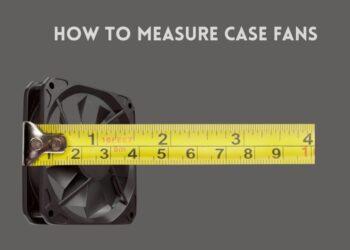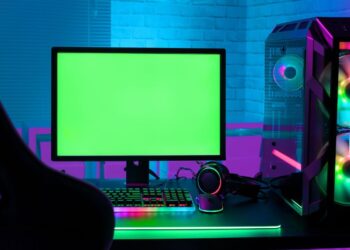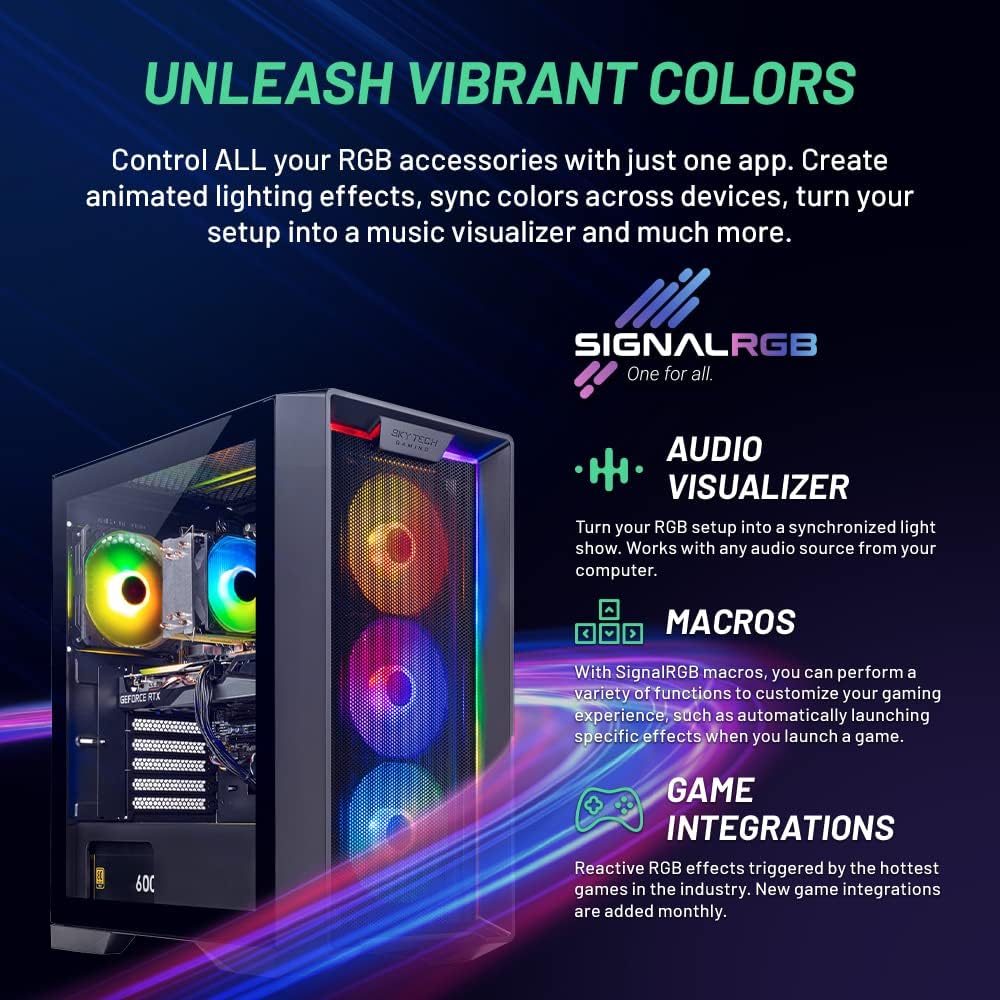Building or buying a computer for music production requires careful consideration.
Recording, editing, mixing and mastering place heavy demands on system resources – the CPU, memory, storage and more. Choosing optimal specs tailored to your workflow is key to smooth music creation and avoiding frustrations.
This comprehensive guide examines each component so you can configure the ideal PC or Mac for your home studio or production needs.
Computer Specs for Music Production (Quick Answer)
While requirements vary, here are general minimum specs recommended by professional producers:
- CPU: Intel Core i7 or AMD Ryzen 7 quad-core processor, 3.5GHz or higher
- RAM: 16GB DDR4 RAM or higher
- Storage: 500GB+ SSD for OS/DAW/plugins + large HDD for samples
- Audio Interface: External like Focusrite Scarlett series
- OS: Windows 10 or macOS
This combination provides ample power, speed and expandability for most users. Let’s explore how each component contributes to an optimal music production system.
Choosing the Right CPU

The CPU, or processor, is the heart of a music production computer.
It runs the DAW, virtual instruments, effects plugins and various processes in real time as you record, edit and mix audio and MIDI tracks.
A faster, more powerful CPU results in lower latency, reduced risk of audio dropouts and greater capability to run more tracks, plugins and processes simultaneously without overload.
For professional music production, a potent multi-core processor is key.
Clock Speed and Core Count
The two key factors determining CPU speed are clock rate and number of cores. Clock rate, measured in gigahertz (GHz), indicates how many calculation cycles the CPU can perform per second. More gigahertz means a faster processor.
Cores are effectively mini-CPUs within a single processor that allow true multi-tasking – each core can work on a different process or thread concurrently.
For music production, a good target is a quad-core CPU with a clock speed of at least 3.5 GHz. 6 or 8-core processors provide even more power for complex sessions with many software instruments and effects.
Intel Core vs AMD Ryzen
The two most popular CPU brands for music PCs are Intel and AMD. Intel Core processors like the i7 and i9 dominate the high end, while AMD Ryzen chips like the Ryzen 7 provide excellent bang for buck.
Intel CPUs excel at optimized single-core performance, while Ryzen chips emphasize multi-core computing power. Both work well, so choose based on your budget. An i7 or Ryzen 7 will satisfy most producers.
Laptop vs Desktop CPUs
Note that mobile laptop processors like Intel’s Core i7-11800H tend to have lower clock speeds compared to desktop chips like the i7-11700K due to thermal constraints.
Prioritize clock speed and cores over laptop vs desktop branding when choosing a production CPU.
RAM Requirements

RAM (random access memory) is the working memory required to run multiple programs and processes smoothly. DAWs, virtual instruments and sample libraries can occupy large amounts of RAM.
16GB of RAM is the realistic minimum for professional music production work. This allows you to run a sizable session with orchestral instruments, vocal tracks and various effects.
For complex projects, 32GB RAM or more is advisable to provide breathing room. Abundant RAM reduces the need for freezing tracks and streamlines workflow.
Faster types like DDR4-3600 perform better, but DDR4-3200 is sufficient for most people. Just ensure your motherboard supports the RAM speed.
Storage: SSDs and Hard Drives

A music production computer requires ample storage space for the operating system, DAW, virtual instruments, sample libraries, projects and archived past work. A combination of fast SSDs and larger secondary hard drives offers the ideal setup.
Fast SSD for OS and Applications
An SSD (solid state drive) provides vastly faster load times and data transfer speeds compared to traditional hard drives.
A 500GB SSD is recommended as the primary drive for installing your OS, DAW, plugins, instruments and other apps. 1TB is even better if you can afford it. This drive needs to be high performance to achieve smooth operation.
Hard Drives for Storage
Supplement the primary SSD with one or more HDDs (hard disk drives) for storing your sample and loop libraries, project files and archives. These drives provide abundant capacity without the high cost of all SSDs.
At least 1TB is recommended, but get as much storage as you can afford. Easily expand capacity later by adding external USB 3 hard drives.
Backup Your Data
With so much time invested in projects, always maintain backups of your files, either via cloud storage or onto external hard drives. HDD failures can and do happen, wiping out years of work. Don’t let it happen to you.
Audio Interface: Reduced Latency
While a computer’s onboard sound can function, a dedicated external audio interface like the Focusrite Scarlett series is a prudent investment for music production. Interfaces help:
- Lower latency while recording and monitoring, thanks to optimized drivers. Latency can impair recording and feel unnatural.
- Provide higher quality audio conversion compared to basic onboard soundcards. This enhances recording and mixing accuracy.
- Allow more inputs and outputs for connecting studio monitors, MIDI keyboards, microphones and instruments.
For both audio quality and expandability, investing in an external interface pays dividends for music creators. Just ensure ample ports like Thunderbolt or USB 3 to connect it.
Operating System Compatibility

The decision between Windows and macOS often comes down to personal preference, existing setup and software compatibility needs.
Windows 10
Windows 10 appeals to cost-conscious users thanks to its hardware flexibility. You can configure or build Windows PCs with powerful components tailored specifically for music production. Most DAWs, plugins and libraries work smoothly on Windows 10. The OS handles demanding audio applications well.
macOS (Mac OS X)
macOS enjoys a long history in music creation dating back to early Apple computers like the Macintosh. Some producers appreciate its intuitive design and deep integration with Apple’s pro audio hardware and software like Logic Pro. MacBook’s and iMacs work seamlessly with external audio interfaces and MIDI devices.
Software Compatibility
Ensure your essential software and plugins are fully compatible with your chosen OS before purchasing a system. For example, Apple’s Logic Pro DAW is Mac-only. While most software works on both Windows and Mac, always research before investing in an expensive computer.
Sample Music Production Computer Specs
Here are some example PC configurations suitable for different home studio budgets and needs:
Entry-level home studio
- Intel Core i5-10400 (6-core 4.3GHz)
- 16GB DDR4 RAM
- 500GB SSD
- External audio interface like Focusrite 2i2
- Windows 10
Intermediate professional studio
- AMD Ryzen 9 5900X (12-core 4.8GHz)
- 32GB DDR4 RAM
- 1TB NVMe SSD + 4TB HDD
- RME Babyface Pro FS interface
- Windows 11
High-end commercial studio
- Apple iMac Pro 27″ (18-core Xeon 2.3GHz)
- 128GB DDR4 ECC RAM
- 4TB SSD
- Universal Audio Apollo x16 interface
- macOS
Tweak components like the CPU, RAM, drives and OS to match your specific workflow and budget. Focus on the processor and memory first.
Other Important Components
Beyond the core system specs, here are some other components that can enhance your computer for music production:
- Audio-optimized motherboard – Choose a board designed for audio use, with high-quality capacitors and components to reduce noise.
- High resolution display – A 27″ QHD or 4K display provides ample screen real estate for your DAW and plugins. Calibrate color for accuracy.
- MIDI keyboard controller – A MIDI keyboard connects via USB to input notes and control DAW parameters. Modulation wheels and pads add expression.
- External hard drives – Use portable external SSD or HDD drives to expand capacity and archive finished projects. Thunderbolt recommended.
- Uninterruptible power supply (UPS) – A UPS provides battery backup during power outages and protects equipment from surges. Useful for live gigs.
Conclusion
Optimizing a computer for music production starts with choosing components like the CPU, RAM and storage to match your specific workflow and software needs.
While you can start lower, the specs recommended in this guide provide capable performance with room to grow.
Investing more in core elements like the processor and memory makes the biggest impact.
External interfaces, monitors and controllers further enhance workflow. Take the time to select parts suited to your needs to assemble a system that powers your creativity.
FAQs
Which Windows PC is best for music production?
The best Windows PC for music production has a fast multicore processor like an Intel Core i7 or AMD Ryzen 7, at least 16GB of RAM, a 500GB SSD for the operating system and programs, and a large high speed hard drive for audio samples and projects. A dedicated external audio interface is recommended over onboard sound.
How to choose a laptop for music production?
When choosing a laptop for music production, prioritize a fast processor with at least 4 cores, abundant RAM of 16GB or higher, and an SSD drive for fast access. Look for a Thunderbolt port to connect audio interfaces. A 15″ screen provides ample size. Consider a gaming laptop for performance.
Why is DAW so expensive?
DAW software is expensive because it requires extensive development to create a deep feature set for composing, recording, editing, mixing and mastering. Additional costs arise from continual upgrades and customer support. However, many free or affordable DAW options exist.
What is the best PC spec for DAW?
The best PC specification for running DAW software smoothly includes a fast multi-core processor like an Intel i7, at least 16GB RAM, an SSD system drive, and a high performance graphics card if the DAW is graphically intensive. These specs provide power for plugins and multiple tracks.
Which audio is best in laptop?
For the best audio quality in a laptop, use an external USB or Thunderbolt audio interface rather than the built-in soundcard. Interfaces offer higher fidelity conversion, less latency, and more I/O. Popular affordable options are the Focusrite Scarlett and Native Instruments Komplete Audio interfaces.
Is a 13 inch laptop good for music production?
A 13 inch laptop can work for basic music production using headphones. However, a 15 inch or larger screen is better suited to view the full DAW and various plugins at once. An external monitor can help augment a smaller laptop screen when producing music.
How many GB is good for music production?
For music production, a good amount of storage space is 1TB or larger. This provides capacity for the operating system, DAW software, virtual instruments, sample libraries and audio project files. Use a 500GB SSD for programs and a 1TB or larger hard drive for storage.
How much RAM does FL Studio use?
FL Studio can function with 4GB RAM, but struggles with larger projects. 8-16GB RAM is recommended for smooth performance in FL Studio, allowing ample tracks and plugins. More complex projects may require 32GB RAM or more. Faster types like DDR4-3600 provide better performance too.














